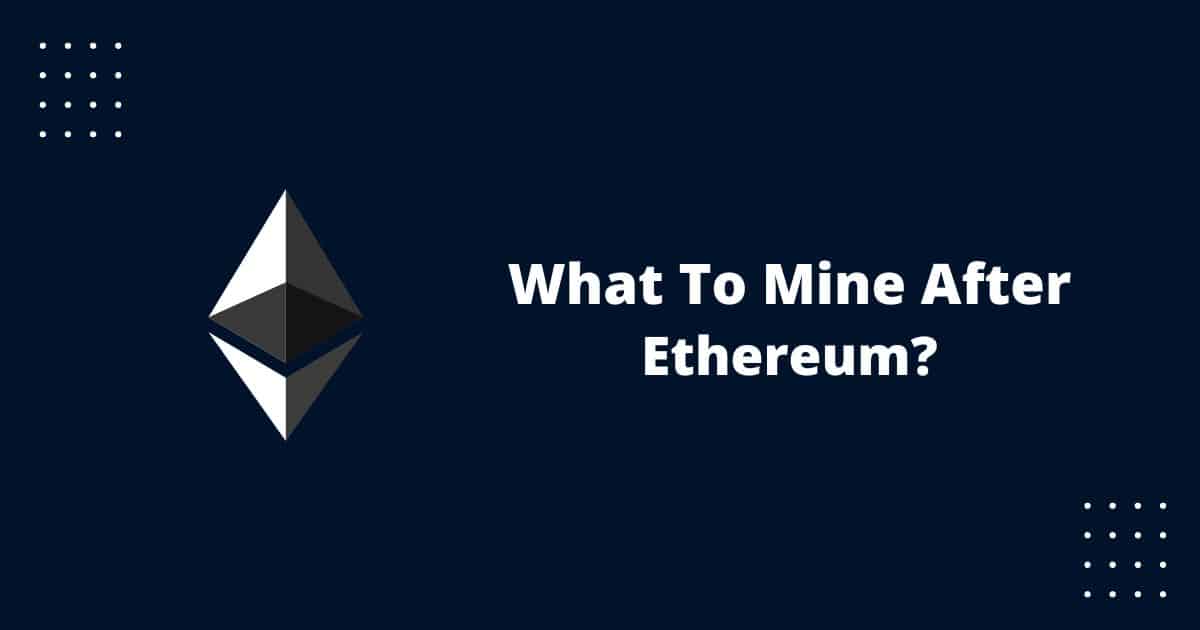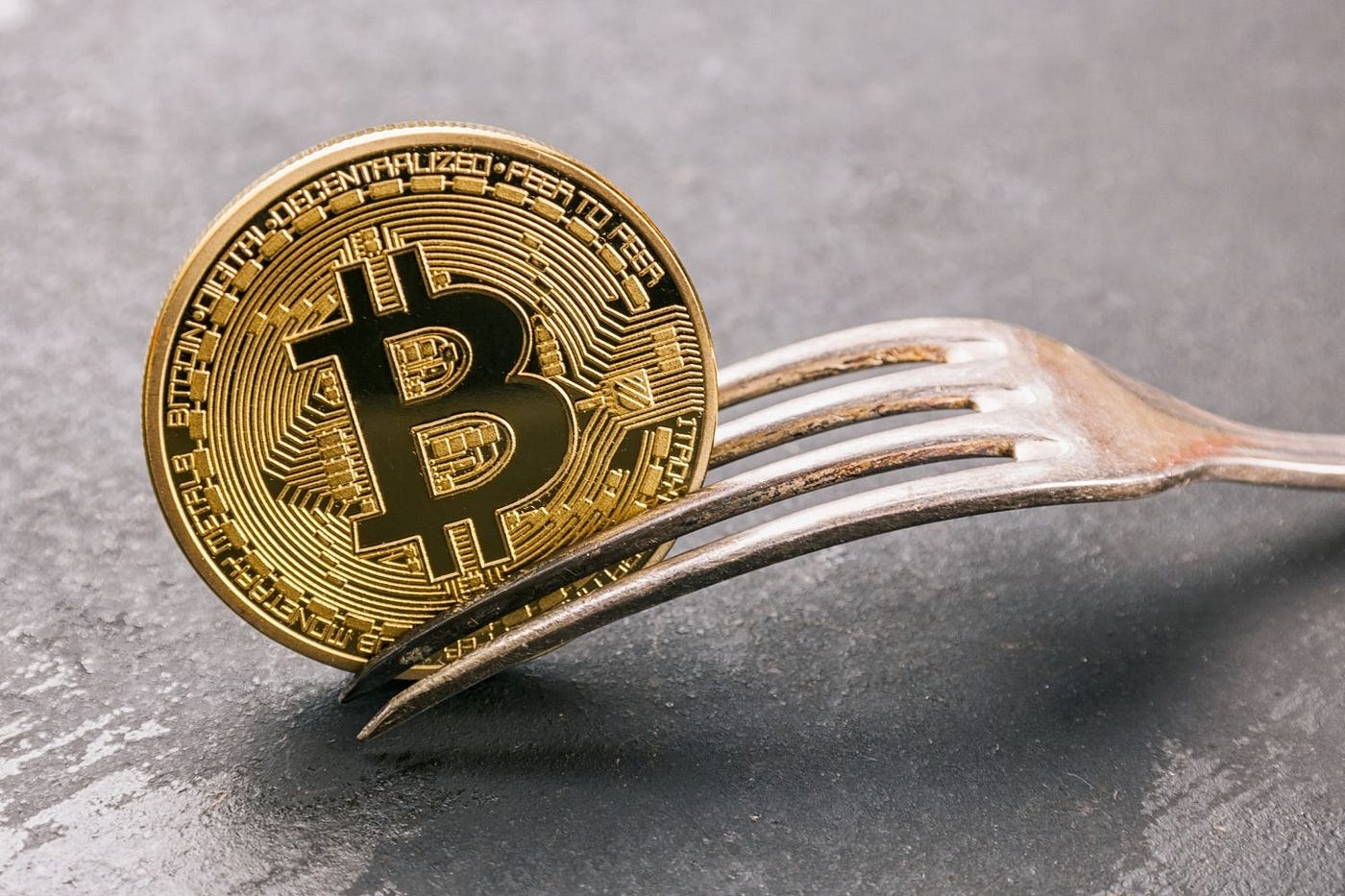Introduction
Welcome to the world of cryptocurrencies, where decentralized digital currencies have taken the financial landscape by storm. One such cryptocurrency that has gained significant popularity is Monero. Built on a secure and private blockchain, Monero offers users enhanced privacy and anonymity. However, as with any blockchain-based cryptocurrency, the size of the blockchain plays a crucial role in its functionality and scalability.
In this article, we will delve into the intricacies of the Monero blockchain and explore the factors that influence its size. We will also discuss the growth of the blockchain over time, the challenges posed by a large blockchain, and the potential solutions and optimizations to reduce its size.
Before we dive deeper, let’s first understand what the Monero blockchain is and how it differs from other cryptocurrencies like Bitcoin. While Bitcoin transactions are traceable on a public ledger, Monero takes a different approach by implementing cutting-edge cryptographic techniques to ensure untraceable transactions and hidden sender and recipient addresses. This focus on privacy and fungibility sets Monero apart in the cryptocurrency world.
Now that we have a basic understanding of Monero and its privacy features, let’s explore the size of the Monero blockchain. The blockchain is a decentralized ledger that records all transactions and activities within the Monero network. Over time, as more transactions occur, the blockchain continues to grow in size. However, unlike traditional financial systems, the size of the blockchain can pose unique challenges in terms of storage, bandwidth, and processing power.
In the following sections, we will examine the various factors that contribute to the size of the Monero blockchain, analyze its growth over time, and explore the challenges associated with a large blockchain. We will also discuss potential solutions and optimizations that can be implemented to mitigate these challenges and reduce the blockchain’s size.
What is the Monero Blockchain?
The Monero blockchain is the foundational technology behind the Monero cryptocurrency. It serves as a decentralized ledger that records all transactions and activities within the Monero network. Unlike traditional financial systems, the Monero blockchain operates without the need for a central authority, relying instead on cryptography and consensus algorithms to verify and secure transactions.
One of the main distinguishing features of the Monero blockchain is its focus on privacy and anonymity. Monero utilizes advanced cryptographic techniques, including ring signatures, stealth addresses, and confidential transactions, to conceal sender and recipient addresses, as well as transaction amounts. This ensures that transactions made on the Monero network cannot be traced or linked to specific individuals, providing a high level of privacy and fungibility.
Another notable aspect of the Monero blockchain is its emphasis on decentralization. The network consists of a vast network of nodes that validate and propagate transactions, ensuring the reliability and security of the blockchain. These nodes work collectively to maintain the integrity of the blockchain, preventing fraud and ensuring that all transactions are valid and accurate.
Furthermore, the Monero blockchain employs a consensus algorithm known as Proof-of-Work (PoW). This algorithm requires miners to solve complex mathematical puzzles in order to validate transactions and add them to the blockchain. This process of mining not only secures the network but also incentivizes miners to participate and maintain the blockchain’s decentralization.
In summary, the Monero blockchain is a decentralized ledger that powers the Monero cryptocurrency. Through its focus on privacy, anonymity, and decentralization, the Monero blockchain provides users with a secure and reliable platform for conducting private transactions. By utilizing advanced cryptographic techniques and a robust consensus algorithm, the Monero blockchain ensures the integrity and privacy of transactions, making it a compelling choice for individuals seeking financial privacy in the digital age.
The Size of the Monero Blockchain
The size of the Monero blockchain is an essential aspect to consider when evaluating its scalability and usability. As transactions are conducted on the network, they are recorded on the blockchain, resulting in its continuous growth. The size of the blockchain is influenced by various factors, including the number of transactions, the size of transaction data, and the frequency of block creation.
At present, the size of the Monero blockchain is significant and continues to increase as more transactions are added. As of [current date], the blockchain size exceeds [current blockchain size], highlighting the scale of data stored within the network. This growth in size poses challenges in terms of storage, bandwidth, and processing power for network participants, such as users and nodes.
The size of the blockchain directly affects the time required for syncing wallets and verifying transactions. Users who opt to run a full node will need to download and store the entire blockchain, which can be a time-consuming process due to its size. Additionally, the larger the blockchain, the more storage space and bandwidth are required to operate a node efficiently.
While the increasing size of the Monero blockchain might be seen as a hindrance, it also demonstrates the network’s usage and adoption. A growing blockchain indicates an active and thriving ecosystem, with an increasing number of transactions being conducted. However, it is crucial to address the challenges posed by a large blockchain and find solutions to ensure the network remains accessible and scalable.
It is worth noting that the size of the blockchain varies over time, influenced by factors such as transaction volume and network usage patterns. As more users and transactions join the Monero network, the size of the blockchain will continue to expand. This growth is a testament to the network’s popularity but necessitates finding ways to manage and optimize the size for better efficiency.
In the following sections, we will explore the factors that influence the size of the Monero blockchain and discuss the implications of a large blockchain on the network. We will also delve into the potential solutions and optimizations available to reduce the blockchain size and enhance the scalability of the Monero network for its users.
Factors Influencing the Blockchain Size
The size of the Monero blockchain is influenced by a variety of factors, all of which contribute to the accumulation of data within the network. Understanding these factors is crucial for comprehending the dynamics behind the blockchain’s growth and its implications for users and network participants. Let’s explore some of the key factors that influence the size of the Monero blockchain:
- Transaction Volume: The number of transactions conducted on the Monero network directly impacts the size of the blockchain. As more transactions occur, additional data is added to the blockchain, resulting in its expansion over time.
- Transaction Size: The size of each individual transaction also plays a role in the overall size of the blockchain. Transactions with larger amounts of data, such as those with multiple inputs and outputs or complex smart contract interactions, contribute more significantly to blockchain growth.
- Block Frequency: The frequency at which new blocks are created within the Monero network affects the blockchain’s size. A higher block frequency leads to more frequent additions of new transactions onto the blockchain, resulting in faster blockchain growth.
- Storage of Metadata: The Monero blockchain contains additional metadata for each transaction, such as ring signatures and stealth addresses, which contribute to its overall size. While this metadata is crucial for maintaining privacy and security, it also adds to the growth of the blockchain.
It is essential to note that these factors are interconnected and interact with each other to determine the overall size of the Monero blockchain. As the network grows, more users join, and transaction volume increases, leading to additional data being added to the blockchain. This growth pattern highlights the scalability challenges associated with a continuously expanding blockchain.
Addressing and managing the blockchain’s size is crucial for ensuring the efficiency and accessibility of the Monero network. As we will explore in later sections, there are various solutions and optimizations available to mitigate the challenges of a large blockchain. These include pruning techniques, database compression, and enhanced transaction protocols.
Having examined the factors influencing the size of the Monero blockchain, we can now explore the growth trajectory of the blockchain over time and the challenges that come with managing a large blockchain efficiently.
Growth of the Monero Blockchain Over Time
The growth of the Monero blockchain over time is a testament to the increasing usage and adoption of the cryptocurrency. As more users join the network and conduct transactions, the blockchain continues to expand, accumulating a vast amount of data. Understanding the growth trajectory of the blockchain is crucial for evaluating its scalability and potential challenges. Let’s explore how the Monero blockchain has evolved and expanded since its inception:
Since its launch in [year], the size of the Monero blockchain has grown steadily. In the early stages, the blockchain was relatively small, as the user base was limited, and the transaction volume was lower. However, as interest in Monero grew and its reputation for privacy and anonymity spread, more users started utilizing the cryptocurrency, leading to a significant increase in transactions and subsequent growth in the blockchain’s size.
As time progressed, the size of the Monero blockchain experienced exponential growth. This growth can be attributed to the increasing number of transactions being conducted on the network and the expanding user base. With each transaction added to the blockchain, the size of the blockchain increased, forming a cumulative record of all transactions since its inception.
It is important to note that the growth rate of the blockchain is not constant throughout its history. There have been periods of rapid expansion due to spikes in transaction volume, as well as periods of relatively slower growth. These fluctuations in growth rate reflect the dynamic nature of the cryptocurrency market and user behavior.
As of [current date], the Monero blockchain is substantial in size and continues to grow. The blockchain size exceeds [current blockchain size], highlighting the scale of data stored within the network. This growth presents challenges for network participants, such as users and nodes, in terms of storage, bandwidth, and processing power requirements.
Managing the growth of the Monero blockchain is crucial for maintaining the scalability and efficiency of the network. Addressing the challenges of a large blockchain requires implementing solutions and optimizations to reduce the blockchain’s size while ensuring the integrity and security of the network. These solutions will be discussed in later sections of this article.
In summary, the growth of the Monero blockchain reflects the increasing adoption and usage of the cryptocurrency. The size of the blockchain has expanded as a result of the growing transaction volume and user base. Recognizing the growth trajectory of the blockchain helps in understanding the challenges associated with a large blockchain and finding ways to address them effectively.
Challenges of a Large Blockchain
While the growth of the Monero blockchain demonstrates its increasing popularity and usage, a large blockchain presents several challenges that need to be addressed to ensure the network’s scalability and accessibility. Let’s explore some of the primary challenges posed by a large blockchain:
Storage Requirements: As the size of the blockchain increases, so does the amount of storage space required to store the entire blockchain. This poses a challenge for users who run full nodes, as they need to download and maintain a copy of the entire blockchain on their devices. The larger the blockchain, the more storage space is needed, which can be a limiting factor, especially for users with limited resources or devices with low storage capacity.
Bandwidth Constraints: The size of the blockchain also affects the bandwidth requirements for network participants. When synchronizing with the blockchain or propagating transactions and blocks, nodes need to transmit and receive data. With a larger blockchain, more data needs to be transmitted, leading to increased bandwidth usage. This can be particularly challenging for users with limited internet connectivity or networks with bandwidth limitations.
Processing Power: Validating and processing blocks and transactions on a large blockchain requires computational power. As the blockchain grows in size, the computational resources needed for verifying transactions and participating in consensus mechanisms, such as mining, increase. This can pose challenges for network participants, as they need to invest in powerful hardware to handle the computational demands imposed by a large blockchain.
Syncing Time: Syncing with a large blockchain can be a time-consuming process, especially for users who are joining the network or updating their wallets. The larger the blockchain, the more data needs to be downloaded and processed, prolonging the time required to synchronize with the network. This delay in syncing can hinder the user experience and discourage individuals from participating in the Monero network.
Network Scalability: A large blockchain puts strain on the network’s scalability. With more data to handle, the network may experience slower transaction processing times and higher latency. This can impact the user experience and limit the number of transactions the network can handle within a given timeframe. Ensuring a scalable infrastructure becomes essential to accommodate the increasing demands of a growing blockchain.
Addressing these challenges posed by a large blockchain is crucial for enhancing the usability and accessibility of the Monero network. Various solutions and optimizations can be explored to mitigate these challenges and improve the efficiency of the network. These will be discussed further in the following sections.
Solutions and Optimizations to Reduce Blockchain Size
Reducing the size of the Monero blockchain is essential to address the challenges posed by its continuous growth and ensure the scalability and efficiency of the network. Several solutions and optimizations can be implemented to mitigate the impact of a large blockchain. Let’s explore some of the strategies used to reduce the blockchain size:
Pruning: Pruning is a technique that allows nodes to discard older and unnecessary transaction data from the blockchain while maintaining the integrity and security of the network. With pruning, only the most recent transaction history is retained, significantly reducing the blockchain’s size. This approach helps conserve storage space and bandwidth requirements for network participants.
Database Compression: Implementing effective database compression techniques can help reduce the size of the blockchain without compromising data integrity. By compressing the blockchain data, storage requirements can be significantly reduced. However, it is important to ensure that the compression algorithm used is secure and does not compromise the privacy or security features of the Monero blockchain.
Transaction Protocols: Optimizing the transaction protocols can contribute to reducing the overall size of the blockchain. By implementing more efficient transaction structures or reducing the metadata associated with each transaction, the size of the blockchain can be effectively reduced. However, it is important to balance these optimizations with maintaining the privacy and security features of the Monero network.
Scaling Solutions: Implementing scaling solutions, such as off-chain transactions or layer-two protocols, can help alleviate the pressure on the main blockchain and reduce its size. These solutions involve conducting transactions off the main blockchain and then settling the final transaction details on-chain. By moving some transactions off-chain, the overall blockchain size can be reduced, improving scalability and network throughput.
Blockchain Sharding: Sharding is a technique that involves partitioning the blockchain into smaller, manageable segments or shards. Each shard contains a subset of the entire blockchain, thereby reducing the size of each individual shard. By distributing the workload across multiple shards, the overall blockchain size can be effectively reduced, increasing scalability and reducing storage and computational requirements.
It is important to note that implementing these solutions and optimizations requires careful consideration and thorough testing to ensure their compatibility with the Monero network’s privacy and security features. Balancing the reduction in blockchain size with maintaining privacy and fungibility is crucial for preserving the core principles of the cryptocurrency.
By leveraging these solutions and optimizations, the Monero network can effectively reduce the size of the blockchain while improving scalability and usability for its participants. Ongoing research and development in this area are crucial to address the challenges associated with a large blockchain and ensure the long-term viability and sustainability of the Monero cryptocurrency.
Conclusion
The size of the Monero blockchain plays a significant role in the scalability and usability of the network. As transactions accumulate, the blockchain grows, posing challenges in terms of storage, bandwidth, and processing power. However, solutions and optimizations exist to mitigate these challenges and reduce the blockchain’s size.
Understanding the factors that influence the blockchain size, such as transaction volume and frequency, transaction size, and storage of metadata, is crucial for comprehending the dynamics of blockchain growth. As the Monero network continues to evolve and attract more users, the blockchain size will inevitably increase.
Managing the growth of the Monero blockchain requires implementing solutions such as pruning, database compression, optimizing transaction protocols, exploring scaling solutions, and implementing blockchain sharding. By reducing the size of the blockchain, network participants can mitigate storage and bandwidth requirements, improve synchronization times, and enhance network scalability.
It is essential to strike a balance between reducing the blockchain size and maintaining the privacy and security features that make Monero stand out in the cryptocurrency space. Preserving the integrity and fungibility of the network is paramount while addressing the challenges posed by a large blockchain.
Continued research and development in blockchain optimization techniques will help ensure the long-term viability and scalability of the Monero network. By addressing the challenges of a large blockchain and implementing effective solutions, the Monero community can continue to enjoy the benefits of privacy, security, and decentralization offered by this innovative cryptocurrency.
In conclusion, understanding the size of the Monero blockchain and the challenges associated with its growth is necessary for building a robust and scalable network. By implementing solutions and optimizations to reduce the blockchain size, the Monero community can continue to benefit from the privacy and security features while ensuring the accessibility and efficiency of the network.

























